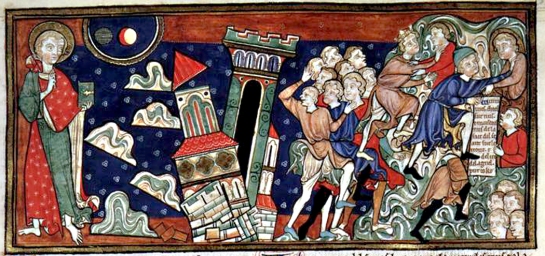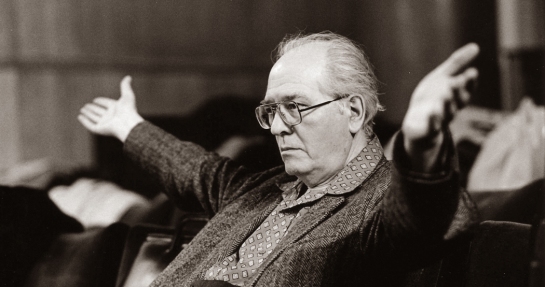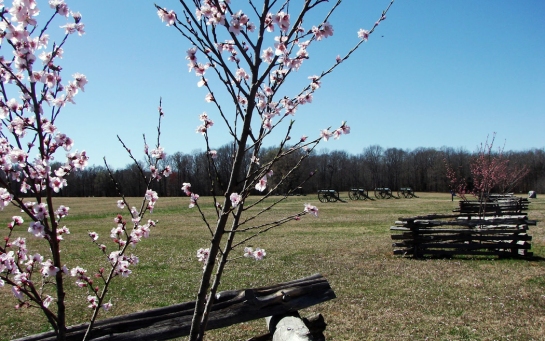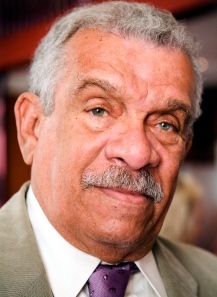It is April 2014 and the dogwoods bleach the woods of a Civil War battlefield in southern Tennessee.
 Their whiteness remembers a signature episode from the fighting: On April 6, 1862, the peach blossoms near Shiloh Church, shocked from their branches by bullets and cannons, fell like a snow on the dead bodies of the Northern and Southern soldier alike.
Their whiteness remembers a signature episode from the fighting: On April 6, 1862, the peach blossoms near Shiloh Church, shocked from their branches by bullets and cannons, fell like a snow on the dead bodies of the Northern and Southern soldier alike.
It is best to see a historic battlefield at the same time of year as the soldiers who died there knew it. You get a better sense of it. At Shiloh, you can feel the spring humidity thickening the air. Nights are cool; they cloud up with April showers. Days are warm with sun. A million crane flies have awakened to the season and float over the unplowed fields. The redbuds wear their flowers like coral beads along their branches, and the dirt beneath our feet, still damp from the thaw, is beginning to dry enough to cultivate.
And 152 years ago, the Battle of Shiloh was the first major battle in the western theater of the Civil War. It was also the battle that first taught the Union and Confederate armies that the war was going to be long and vicious. It put a violent end to thoughts of quick and easy victory. It also nearly cost Gen. Ulysses S. Grant his job.
You drive along the narrow macadam in Shiloh National Military Park, 110 miles east of Memphis, looking at the monuments in the woods, wondering why such an obscure patch of wood and field should have the importance it has.
It is miles from anywhere; why would anyone fight over it?
With our cars and interstates, sometimes it is hard to remember that America’s past is one of rivers and railroads. When the Union Army invaded the South in Tennessee, it did so along the rivers. Military objectives often were railroads rather than cities.
And so it was in 1862, when Grant, a field general under commanding Gen. Henry Halleck, attacked forts Henry and Donelson in northern Tennessee. Grant’s victories opened up the Tennessee and Cumberland rivers, forcing the Confederate Army to abandon the entire state.
And in March of that year, Gen. Albert Sidney Johnston marshaled his Southern army in Corinth, Miss., a few miles south of the Tennessee border, where he could guard the crossing of two vital railroads.
Grant had Johnston on the run, and Grant felt confident.
In following up on the battles, Grant bivouacked most of his Union soldiers at Pittsburg Landing, about 20 miles north of Corinth. He planned to attack Corinth, but was waiting for reinforcements from Gen. Don Carlos Buell, and while he waited, his troops camped leisurely near the Tennessee River.

When asked if they shouldn’t fortify the camp, Grant and his assistant, Gen. William Tecumseh Sherman dismissed the thought that the Confederates would attack.
”I have scarcely the faintest idea of an attack being made upon us,” Grant wrote Halleck, his superior back in St. Louis.
Grant had miscalculated, and Johnston with his assistant, Gen. P.G.T. Beauregard was already advancing on him, hoping to win a battle before Buell could arrive with Northern reinforcements.
Unfortunately for Johnston, things didn’t go well. The trip from Corinth to Pittsburg Landing, which should have taken a day, took three days. Bad roads and worse weather slowed the troops.
”As we stood there, troops tramped by mud and rain and darkness,” wrote one Confederate soldier. ”To us who were simply standing in line in the rain, it was bad enough, but those men who were going by were wading, stumbling and plunging through mud and water a foot deep.”
The delay might have lost the element of surprise for the Southerners — if the Yankees had been paying attention. And in the Rebel camp, Beauregard argued for canceling the attack.
”There is not chance for surprise,” he told Johnston. ”Now, they will be entrenched to the eyes.”
Johnston didn’t care. He wanted a fight and wanted it immediately.
”I would fight them if they were a million,” he said.
The actual battle began at 5 a.m. April 6 and it began by accident, when forward units of the Graycoats bumped into outlying remnants of Yankees. The shooting began and it hardly stopped for two days.

Although Johnston had a good battle plan, it quickly fell apart, and the fighting became widely scattered and disorganized.
One thinks of battlegrounds as fields — rolling grass dotted with statues and cenotaphs. But the reality was quite different. Southern Tennessee is thickly wooded and the Shiloh battlefield was mostly woods. Interspersed among the trees were farm fields, square patches of clarity in the obscurity of trees and underbrush. Sherman and his units fought in the woods around a small Methodist church, a log cabin called Shiloh Meeting House. The battle takes its name from the cabin, which is no longer there. A modern church stands near the spot.
The height of fighting that day took place on a field owned by farmer Joseph Duncan. A Union force of about 5,000 men under Gen. Benjamin Prentiss had dug themselves in along a worn wagon path, called the ”Sunken Road,” at one edge of the field. A couple of hundred yards away, Confederates lined the other edge of the clearing.
For most of the day, Confederate infantrymen charged Prentiss and were pushed back by withering gunfire.
”The enemy reserved their fire until we were within about 20 yards of them,” wrote one Confederate soldier. Then the Yankees opened fire, ”mowing us down at every volley.” The whiz and buzz of Minie balls flying through the air was so loud and constant that the position was called the ”Hornets’ Nest.”

Twelve times the Rebels attacked and were repulsed.
Then Confederate Gen. Daniel Ruggles tried something different. He assembled 62 cannons and bombarded Union positions. The line to the left and right of Prentiss retreated, but Prentiss held on until 5:30 in the afternoon, when Confederates surrounded him, and Prentiss and about 2,100 Union soldiers were forced to surrender.
On the whole, the Confederates did well on April 6. They forced the Union men back toward Pittsburg Landing and the Tennessee River. But Grant, never panicking as his army was decimated, arranged his troops in a final defensive line that held as night came on.
Beauregard was so elated by the Graycoats’ success that he wired his superiors in Richmond, Va., that he had won a ”complete victory.”
It wasn’t all good news for the Confederacy that day, though. Johnston had been shot in the leg, severing an artery, and bled his life away into his boot. No one recognized the severity of his wound until it was too late. Johnston died on the field and command fell to Beauregard. Johnston’s is still the highest-ranking battlefield death in American history.
Night may have brought thoughts of victory to Beauregard, but it also brought rain. Troops, in wet wool uniforms and soggy leather boots, slept in the open. They shivered terribly in the cold of the night. Confederate soldier George Jones wrote in his diary, ”I have the shakes badly. Well, I am not alone in fact we all look like shaking Quakers.”
Grant himself slept in the open under a tree.
The next morning, Beauregard assumed all he had to do was mop up. But during the rainy night, Grant got his reinforcements, as Buell crossed the river and shored up Grant’s defenses. And when the battle resumed on April 7, the tide of battle turned. One Rebel remembered, ”The Yankees appeared to me like ants in their nest, for the more we fired upon them, the more they swarmed about; one would have said that they sprouted from the ground like mushrooms.”
The Rebel army was pushed back to its original lines, and by midafternoon, it was clear to Beauregard that he would have to retreat. The entire battle had been a fiasco.
The Yankees had been caught off guard and nearly lost the fight. The Confederates lost their best general in the days before Robert E. Lee took command in Virginia. Both sides lost huge numbers of men, and in the end, both sides were where they were before the battle began: Grant at Pittsburg Landing and Beauregard back in Corinth.
The bloodiness of the fighting came as a shock to the public on both sides of the war. Of the South’s 44,000 men in the fight, nearly a quarter were casualties, with 1,700 killed. Grant’s force, joined with Buell’s, came to 65,000, of which 13,000 were casualties, with 1,700 killed.
In fact, more casualties were inflicted at Shiloh than in all the wars America had fought before then put together.
The battle changed the nation’s attitude toward the war. Before Shiloh, one Union soldier wrote, ”My opinion is that this war will be closed in less than six months.” Shortly after Shiloh, the same soldier thought it might take 10 years.
What didn’t take long was for Northern editorial writers and politicians to call for Grant’s scalp. He was an incompetent officer, it was claimed, who hadn’t prepared for the unexpected battle.
But President Lincoln — recognizing something in Grant that he couldn’t find in a general in the East, as he went through one incompetent general after another — refused to remove Grant.
”I can’t spare this man; he fights,” Lincoln said.

Now, when you stand at the edge of the Hornets’ Nest looking back over the field toward Ruggles’ cannons, or walk in Sarah Bell’s field, where her peach orchard used to be, near where Johnston was killed, you can see something of the confusion that must have reigned in 1862. The woods are still there, with those few fields in between. It is impossible to conceive of anyone at any part of the battle knowing what was happening at any other part. The maps show where troops moved, and where the cannons were assembled, but they give you a false sense of clarity.
That’s why you have to visit the place.
You cannot get a real feel for the battle without standing on the ground and seeing the landscape.
And if you are very lucky, when you are there in April, it will rain.



































